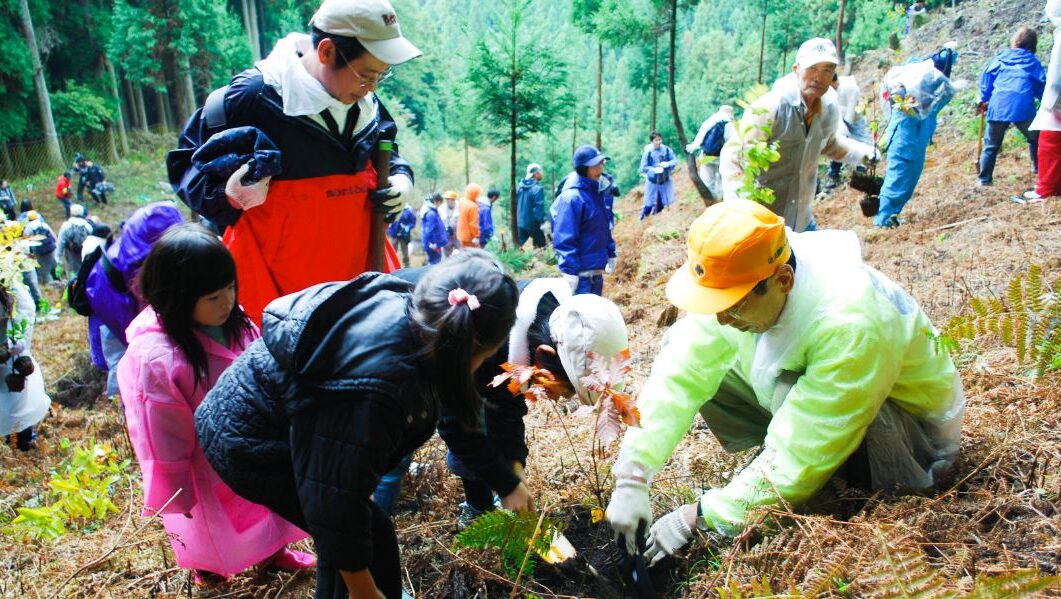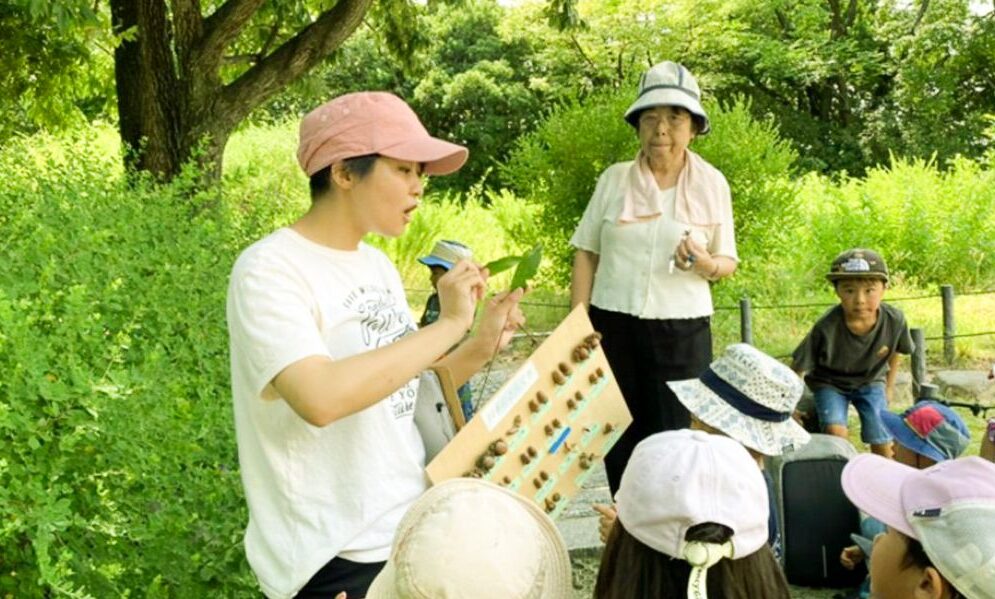About Us
Group President's message
During my junior high school days, I learned about the critical situation of Japan’s forests and wildlife, realizing that if the rich forests inhabited by bears were lost, Japan, being an island nation, would lose its water source. This revelation was a significant shock. Alongside my classmate Mariko Moriyama, who later became a “science teacher,” we initiated extensive efforts to prevent the extinction of bears. In 1997, during our university years, we formed the Japan Bear Forest Association together. Through our bear conservation activities, I began to recognize the need for legal experts within conservation organizations, prompting me to acquire a lawyer’s qualification. In April 2018, I took over the baton from the inaugural chairperson, Mariko Moriyama, and assumed the role of the second-generation chairperson.
Currently, the crisis facing Japan’s forests and wildlife is worsening. Insects are already undergoing mass extinction, and global environmental destruction is progressing to the point of threatening human survival. In Japan, vast artificial forests of cedar and cypress in the remote mountains remain neglected, causing wildlife to lose their habitats. Animals venture out of the mountains in search of food only to be culled by guns and traps. Despite severe forest degradation, including landslides and reduced water retention capacity, adults are preoccupied with immediate concerns and are unwilling to engage in nature conservation.
You may want to turn away from despairing situations, but without coexistence with nature, humanity has no future. As a mother, I have resolved once again to dedicate my life to the regeneration of the Okuyama, the source of water, so that children can live in abundance for 100 years and 1,000 years to come, conserving a rich natural environment.
Though individual efforts may seem small, by uniting many people, we can influence the country and establish laws and systems to protect nature. I would be delighted to engage in bear conservation activities with all of you. Even if you cannot actively participate, your support as a member of the Japan Bear Forest Association would contribute to the strength of our cause.
For the sake of the next generation! For the sake of all life! Let us join hands, those who share the same thoughts, and create a flow towards the vibrant regeneration of the forest, including the lives of bears and other creatures!


Our Vision
Striving for a sustainable society that coexists with all living creatures.
Even in the 21st century, without nature, humans cannot survive even for a single day. Oxygen, pure and nourishing water, and food—all of these are obtained only when there is abundant nature.
The natural ecosystem is a delicate balance built upon the intricate interactions of countless organisms, constantly changing and beyond the control or management of humans. Building a society that coexists with all living beings, marked by gratitude and reverence for nature, is the essence of Kumamori's perspective on conservation.
~ Gratitude to our ancestors, responsibility for the future, and reverence for all living things ~

Kumamori's activities shown through data

National Branches
29
branches
Each branch is located in various regions to engage in activities tailored to local nature and culture.

Members
21,261
people
We are aiming to become a large-scale nature conservation organization similar to those in Europe and the United States, we continue our activities.

History of Activities
27
years
The association was established as the movement for bear protection by junior high school students expanded.

Forests acquired for permanent preservation
1376 ha
We trust (purchase) forests that serve as feeding grounds for wild animals, and preserve them by thinning and otherwise caring for them.

Beginning of our campaign
In January 1992, a student from Mukoh Higashi Junior High School in Amagasaki, Hyogo Prefecture, brought a single newspaper article, “Black bears scream at environmental destruction,” which shocked the junior high school students. However, no adult action was taken. Unable to contain their heartache, the students formed a number of nature conservation groups on their own, and their activities grew. Student representatives took the signatures they had collected to the Forestry Division of the Hyogo Prefectural Government.

When they learned that the extinction was unlikely to be stopped, they appealed directly to then Hyogo Prefecture Governor Toshitami Kaihara.
The students also wrote a letter to Their Majesties the Emperor and Empress who came to Hyogo Prefecture for the National Tree Planting Festival.
As a result, a heavy door finally opened, and in May 1994, the Director General of the Environment Agency announced a “black bear hunting ban in Hyogo Prefecture. Despite the students’ desperate efforts, no adults were willing to take action to address the problem of forest devastation and the conservation of wild animals. The former junior high school students who had now become university students formed the Kumamori Association of Japan in 1997, believing that “Japan needs a large nature conservation organization supported by citizens like those in Europe and the United States that does not stop at surveys and research, but also conducts practical activities to preserve forests and wild animals.
Our Journey
February 1992 The campaign to “Stop the Extinction of Bears” begins at Muko Higashi Junior High School in Amagasaki City, Hyogo Prefecture.
April 1997 The Japan Bear and Forest Society (a voluntary organization) is established by Mariko Moriyama, the former science teacher of the junior high school, along with former students who had become university students and local citizens.
November 1997 The first fruit-bearing tree planting event is held in the bear habitat in Mikata Town, Hyogo Prefecture.
December 1997 The first issue of the “Kumamori” is published (later revamped as the newsletter ”Kumamori News”).
March 1998 Three university student staff members dispatched to U.S. nature conservation organizations for the first time (Sierra Club and two other organizations).
March 2002 At the Rotary International District 2680 (Hyogo Prefecture) conference, Chairperson Moriyama and five students give a lecture, which is published in “Rotary Friend” and receives a nationwide response.
June 2002 The first office is opened in Nishinomiya City, Hyogo Prefecture.
March 2003 The first branch is established in Kyoto Prefecture.
Autumn 2004 A massive crop failure occurs in the Oku mountains. Bears descend from the mountains, leading to a large-scale culling. The first acorn transport to the Oku mountains is carried out (7 tons).
August 2005 Support begins for the care of “Hanako,” a bear that was on the verge of being euthanized (Wakayama Prefecture).
March 2006 The Oku Mountain Conservation Trust is established as an NPO (later the Public Interest Incorporated Foundation Oku Mountain Conservation Trust).
November 2006 The first bear caught in a snare trap is released (Toyama Prefecture Branch).
March 2007 The booklet “Bears, Forests, and People” is first published.
April 2007 The first full-time employee is hired.
July 2007 Membership surpasses 10,000.
September 2007 The first Tokyo Symposium is held (University of Tokyo Yayoi Auditorium, 370 participants).
March 2008 The organization receives the 11th Global Ethics Promotion Award (from the Institute of Moralogy), and the Minister of Education, Culture, Sports, Science and Technology’s Encouragement Prize.
May 2008 Chairperson Moriyama appears on NHK Radio’s “Era of the Heart” program, receiving a huge response.
October 2008 Membership surpasses 20,000.
June 2010 Forest regeneration begins in Hyogo Prefecture through methods such as stripping bark and creating non-planting forests (natural regeneration).
November 2010 Lobbying activities from the previous year lead to the establishment of the Parliamentary League for the Conservation and Regeneration of Oku Mountain Watershed Forests.
December 2010 Successfully prevents the felling of the giant chestnut tree group in Kutsuki, Shiga Prefecture (Shiga Prefecture Branch). The Japan Bear and Forest Society is established as a general incorporated foundation.
August 2012 The first research presentation meeting of the Japan Oku Mountain Society is held (Hyogo Prefecture).
December 2013 Successfully rescued all the bears at Hachimantai Bear Ranch (Akita Prefecture).
November 2014 A study session is held on the Linear Chuo Shinkansen issue.
April 2015 Construction of a bear house for “Toyo,” a mistakenly captured bear (Osaka Prefecture), and support for its care begins.
December 2015 The first trust of a forestry area in Kutsuki, Takashima City, Shiga Prefecture (211ha).
April 2018 Yuko Muroya becomes the second chairperson.
March 2019 Lobbying activities and a nationwide petition with about 28,000 signatures lead to the inclusion of the use of forest environment tax law for “naturalization of abandoned artificial forests” in supplementary resolutions of both houses of the National Diet.
May 2020 Three bears rescued the previous year are released into the Oku mountains (Niigata Prefecture).
June 2020 An orphaned bear “Kumako” is protected (Ishikawa Prefecture).
July 2021 The National Renewable Energy Issues Liaison Committee is formed. The organization becomes a co-representative.
Kumamori's Activities To Protect Water Sources, Forests And The Wildlife
We organize many activities to protect the forests and coexist with all living things.







